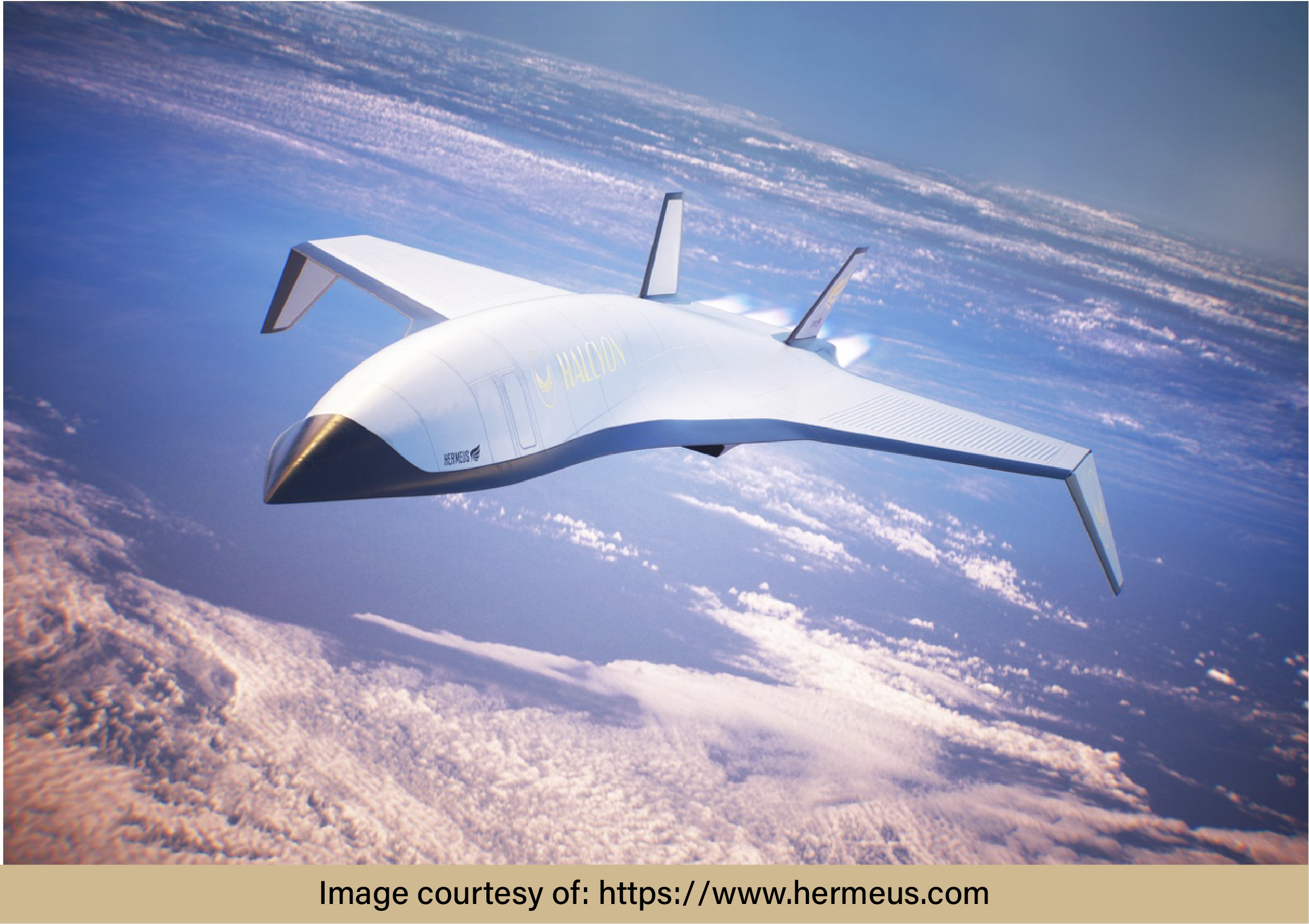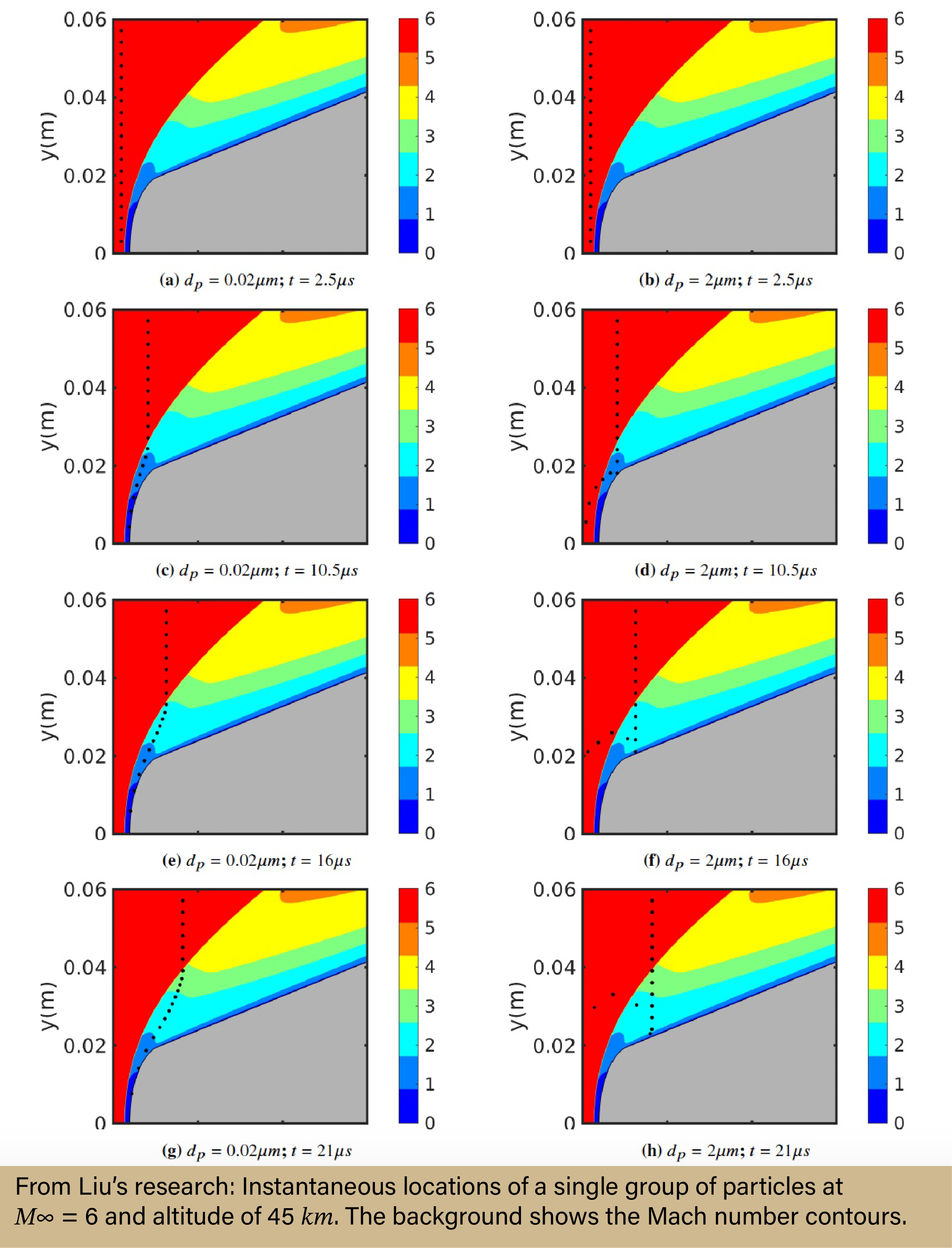Anvil helps researchers study particle dynamics for hypersonic vehicles
Hypersonic flight—that is,  flying faster than Mach 5, or five times the speed of sound—has been around longer than you may think. The first object of human origin to achieve hypersonic flight dates back to 1949 when the U.S. Army test-fired a multi-stage rocket. Fast-forward to today, and we now have reusable hypersonic aircraft, space launch vehicles, and military defense systems, all with hypersonic speed capabilities. Needless to say, hypersonic research has advanced tremendously in the last 70 years, but even so, there are still questions that need answers. One such question revolves around an issue most wouldn’t think to consider—what are the effects of dirty air?
flying faster than Mach 5, or five times the speed of sound—has been around longer than you may think. The first object of human origin to achieve hypersonic flight dates back to 1949 when the U.S. Army test-fired a multi-stage rocket. Fast-forward to today, and we now have reusable hypersonic aircraft, space launch vehicles, and military defense systems, all with hypersonic speed capabilities. Needless to say, hypersonic research has advanced tremendously in the last 70 years, but even so, there are still questions that need answers. One such question revolves around an issue most wouldn’t think to consider—what are the effects of dirty air?
Dirty air, or particle-laden flow, as it’s known in the hypersonics research world, can be extremely problematic for vehicles traveling at hypersonic speeds. Tiny particles, sub-micrometer in size, are deposited into the air via natural events, such as volcanic eruptions, ice clouds, and atmospheric dust, or through human-induced air pollution. These particles then impact the vehicle as it flies through the atmosphere. While it may seem that these particles are too small to be problematic, they can actually cause damage and increase the risk of functional failure. Dr. Qiong Liu, an Assistant Professor in the Department of Mechanical and Aerospace Engineering at New Mexico State University, along with Irmak Karpuzcu, Akhil Marayikkottu, and Deborah Levin, all from the Department of Aerospace Engineering at the University of Illinois, Urbana-Champaign, have used the Anvil supercomputer to elucidate exactly what happens when particles hit the surface of a hypersonic vehicle in flight.
“We are looking to understand the effects of tiny particle impact on the surface of hypersonic vehicles,” says Liu. “These high-speed vehicles usually have thermal protection around the surface to help with excessive heating, but repeated particle impact, even from such small particles, are going to cause damage to the thermal protection, which will cause significant troubles during flight.”
It is widely recognized that particle-laden flow can cause cratering and erosion to the surface of hypersonic vehicles or even engine failure, but the intricate dynamics of this particle-laden high-speed flow are not fully understood. Comprehending these dynamics is critical for improving engineering designs that can counteract such deleterious effects. To fill in this knowledge gap, Liu and the team used Purdue’s Anvil supercomputer to run complex simulations of the particle flow and vehicle interactions under a variety of conditions, including differences in speed and particle size. They specifically wanted to see how particles affected the bow shock. Every hypersonic vehicle creates a very strong but very thin bow shock wave in front of it,  binding the flow around the vehicle. To picture this, think of the way water moves in front and around a fast-moving boat. The bow of the boat pushing through the water creates a curved ridge of water in the front, leading to a sleek flow down the sides, which finally releases behind the vehicle, leaving a wake. The concepts are the same for bow shock in hypersonic vehicles, except the shockwave occurs in three dimensions in the air rather than only on the water’s surface. Distortions in the bow shock can lead to major ramifications for the flight of the vehicle, so understanding these physics is quite important.
binding the flow around the vehicle. To picture this, think of the way water moves in front and around a fast-moving boat. The bow of the boat pushing through the water creates a curved ridge of water in the front, leading to a sleek flow down the sides, which finally releases behind the vehicle, leaving a wake. The concepts are the same for bow shock in hypersonic vehicles, except the shockwave occurs in three dimensions in the air rather than only on the water’s surface. Distortions in the bow shock can lead to major ramifications for the flight of the vehicle, so understanding these physics is quite important.
Using the direct simulation Monte Carlo (DSMC) method, the researchers studied the fundamental flow physics and particle trajectory in the flow field around a blunted cone, the most common forebody shape used in hypersonic flight. The simulations looked at particles ranging from .01 micrometers up to 2 micrometers in size. With these simulations, the group was able to determine both the effects that a single particle of varying sizes had on the bow shock and the statistical characteristics of those particles. They found that lighter particles (less than .02 micrometers) could not penetrate the bow shock wave, and so could never directly impact the vehicle. However, heavier particles (greater than .2 micrometers) passed through the bow shock, directly impacted the vehicle, ricocheted upstream, and then traveled downstream in the flow. This unique interaction and motion of heavier particles led to bow shock distortions.
With this study,  the research team delivered some much-needed clarity regarding the physics of hypersonic flight, but it was only possible with help from supercomputing resources like Anvil. Liu was thrilled with Anvil’s performance throughout the project.
the research team delivered some much-needed clarity regarding the physics of hypersonic flight, but it was only possible with help from supercomputing resources like Anvil. Liu was thrilled with Anvil’s performance throughout the project.
“We are really, really happy with computing on Anvi,” says Liu. “The code was well parallelized, so we had no problems running that. Also, the queue was very short, so we were able to submit jobs and get results very quickly. I’ve actually encouraged many of my new colleagues to apply to use Anvil because I had such a good experience.”
Anvil is Purdue University’s most powerful supercomputer, providing researchers from diverse backgrounds with advanced computing capabilities. Built through a $10 million system acquisition grant from the National Science Foundation (NSF), Anvil supports scientific discovery by providing resources through the NSF’s Advanced Cyberinfrastructure Coordination Ecosystem: Services & Support (ACCESS), a program that serves tens of thousands of researchers across the United States.
For more information regarding HPC and how it can help you, please visit our “Why HPC?” page.
Researchers may request access to Anvil via the ACCESS allocations process. More information about Anvil is available on Purdue’s Anvil website. Anyone with questions should contact anvil@purdue.edu. Anvil is funded under NSF award No. 2005632.
Written by: Jonathan Poole, poole43@purdue.edu
